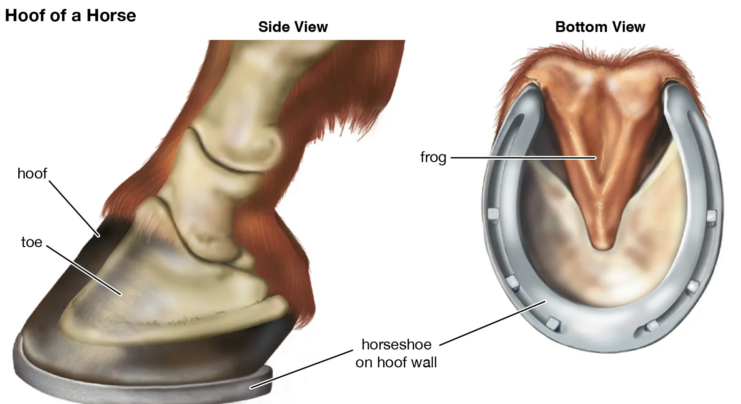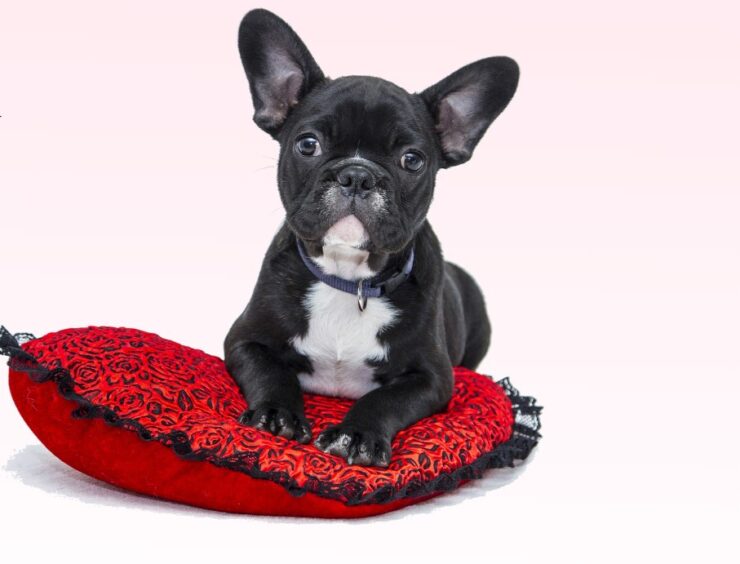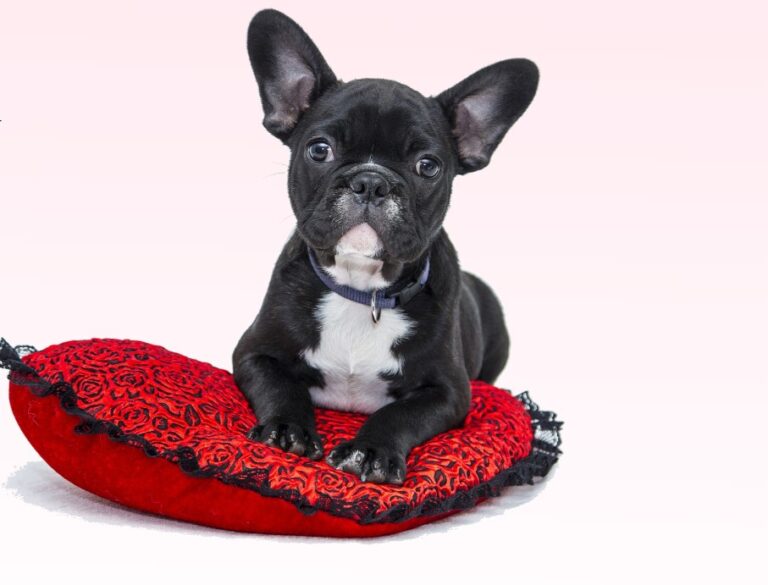Horse hooves are a marvel of nature, a critical component of equine anatomy that plays a vital role in a horse’s overall health and mobility. Understanding the composition and function of horse hooves is essential for anyone involved in equine care or interested in equine biology.
Anatomy of the Hoof
The hoof is more than just a solid block of keratin. It’s a complex structure comprising several layers and parts, each with a specific function. The outer layer, known as the hoof wall, is made of tough keratinized tissue. This part is visible when the horse is standing. It’s durable, designed to withstand the rigors of movement and bearing the horse’s weight.Beneath the wall lies the subcutaneous tissue, including the sensitive laminae. These structures connect the hoof wall to the internal bone structure. The digital cushion, a fibro-fatty, shock-absorbing tissue, sits beneath the hoof, playing a critical role in absorbing impact.
Keratin as The Building Block
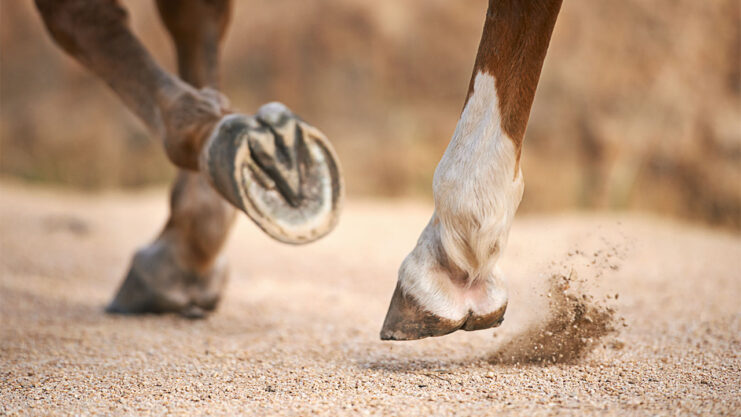
Keratin, a protein found in human hair and nails, is the primary component of the horse’s hooves. This protein forms long chains, creating a tough, resilient structure that can withstand considerable stress. The way keratin molecules bond and form chains determines the hoof’s hardness and flexibility.
Specialized Conditioners for Hooves
It’s worth noting that specialized conditioners tailored for hooves have gained prominence in recent years. These conditioners, enriched with nourishing ingredients like keratin, help maintain the hoof’s natural strength and flexibility, enhancing its resilience against the challenges of different environments and activities.
Regular use of such conditioners not only keeps the hooves in optimal condition but also contributes to the overall well-being of these magnificent creatures, ensuring their continued vitality and comfort in their roles alongside humans. Click here to learn more.
Growth and Regeneration
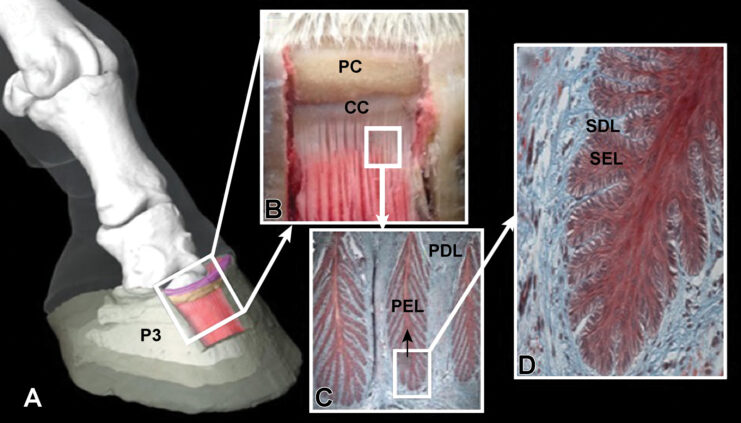
A horse’s hooves continuously grow, much like human nails. The rate of growth can be influenced by factors such as nutrition, breed, and environment. A typical growth rate is about 6 to 9 millimeters per month. Regular trimming and maintenance are essential to ensure the hoof doesn’t become overgrown or misshapen, leading to health issues.
Blood Flow and Hoof Health
Blood flow is crucial for healthy hooves. The hoof has a rich blood supply that nourishes the tissues and aids in growth and repair. Any disruption in blood flow can lead to serious hoof problems, including laminitis, a painful and potentially life-threatening condition.
Environmental Influences
The environment plays a significant role in the condition of a horse’s hooves. Wet conditions can soften the hoof, making it more susceptible to damage and disease, while dry conditions can lead to cracking and brittleness. Proper care, including regular cleaning and appropriate moisture management, is vital.
Proper Care and Maintenance
Proper hoof care is essential for a horse’s health and well-being. This includes regular cleaning to remove debris and inspect for injuries or diseases. Trimming and shoeing by a qualified farrier are crucial to maintain the correct shape and function of the hoof. Nutritional support, particularly biotin, amino acids, and minerals, also plays a role in maintaining healthy growth.
Nutrition’s Role in Healthy Hooves
The significance of nutrition in hoof health cannot be overstated. A balanced diet is crucial for maintaining strong, healthy hooves. Essential nutrients like biotin, amino acids, zinc, copper, and calcium play a vital role in hoof growth and integrity. A deficiency in these nutrients can lead to weak, brittle hooves prone to cracking and other disorders.
Horses on a well-balanced diet typically have better hoof quality. Hay and grass, the primary components of a horse’s diet, may not always provide all the necessary nutrients in the right quantities. Hence, supplementary feed or specific hoof supplements may be necessary, especially for horses with hoof problems.
The Role of Genetics
Common Diseases and Disorders
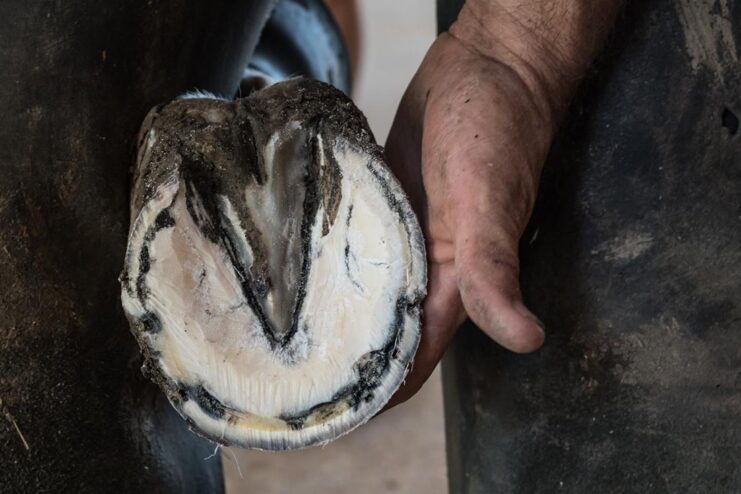
Several diseases and disorders can affect horse hooves. Common conditions include laminitis, white line disease, thrush, and abscesses. These conditions can range from minor, easily treatable problems to severe, life-threatening issues. Early detection and treatment are crucial, highlighting the importance of regular inspections and care.
The Impact of Work and Activity
The type of work and the amount of activity a horse engages in significantly affect hoof health. Horses that perform heavy work or high-impact activities like jumping or racing are more prone to hoof wear and injuries.
The use of horseshoes, designed to protect the hoof from excessive wear and provide additional traction, is common in such cases. However, the decision to shoe a horse depends on various factors, including the horse’s activity level, hoof condition, and the type of terrain they regularly encounter.
Innovations in Hoof Care
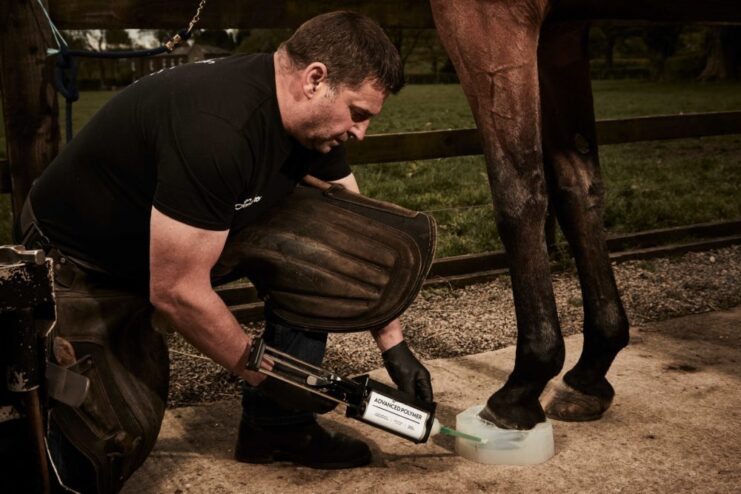
Advancements in equine veterinary medicine and farriery have led to innovations in hoof care and treatment. Techniques like balancing, corrective shoeing, and the use of synthetic materials for hoof repair are becoming more common. These advancements have significantly improved the management of hoof-related issues, leading to better outcomes for horses with hoof problems.
End Note
The hooves are a key element of a horse’s anatomy, essential for its mobility and overall health. Made primarily of keratin, the hoof is a dynamic structure, constantly growing and adapting to environmental conditions.
Proper care, including regular maintenance, a balanced diet, and awareness of genetic and environmental factors, is crucial for animal. With advancements in equine care, understanding and managing hoof health has become more effective, ensuring that these majestic animals continue to thrive in various roles they play in human lives.

